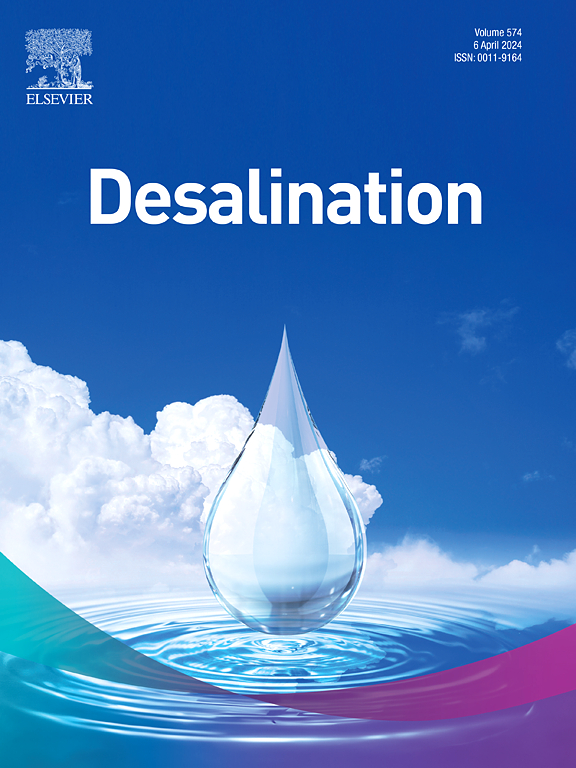Photovoltaics powered seawater desalination by reverse osmosis and water conveyance benefits the green energy transition in the Middle East
IF 8.3
1区 工程技术
Q1 ENGINEERING, CHEMICAL
引用次数: 0
Abstract
Despite the clear benefits, powering large-scale desalination plants and water conveyance by renewable energies is not yet established. In particular, the combination with photovoltaics presents a promising option due to significant cost reductions and the predictable power output in sun-rich countries. This study investigates the technical limits and economic feasibility of variable-operated seawater reverse osmosis desalination and water conveyance operated according to the photovoltaics power profile in Jordan. We analysed suitable operating modes based on the membrane element's safe operating window and determined their power demand profile for energy balancing and economic evaluation. The study results indicate that keeping the concentrate flow constant is the most appropriate desalination operating mode for large-scale implementation. Desalination and water conveyance from Aqaba to Amman, operated following the photovoltaics power profile, cost approximately 2.5 $/m3 at 46 % water production availability, compared to 1.8 $/m3 in full-load operation with a 46 % photovoltaic power share. Furthermore, raising the photovoltaic power share to 72 % is achievable with time-varying water pumping, where each 1 % increase in photovoltaic power share adds about 0.02 $/m3. Variable-operated seawater desalination and time-varying water pumping allow flexible renewable energy utilisation by shifting load and water capacities, advancing the green energy transition by 2050.

求助全文
约1分钟内获得全文
求助全文
来源期刊

Desalination
工程技术-工程:化工
CiteScore
14.60
自引率
20.20%
发文量
619
审稿时长
41 days
期刊介绍:
Desalination is a scholarly journal that focuses on the field of desalination materials, processes, and associated technologies. It encompasses a wide range of disciplines and aims to publish exceptional papers in this area.
The journal invites submissions that explicitly revolve around water desalting and its applications to various sources such as seawater, groundwater, and wastewater. It particularly encourages research on diverse desalination methods including thermal, membrane, sorption, and hybrid processes.
By providing a platform for innovative studies, Desalination aims to advance the understanding and development of desalination technologies, promoting sustainable solutions for water scarcity challenges.
 求助内容:
求助内容: 应助结果提醒方式:
应助结果提醒方式:


